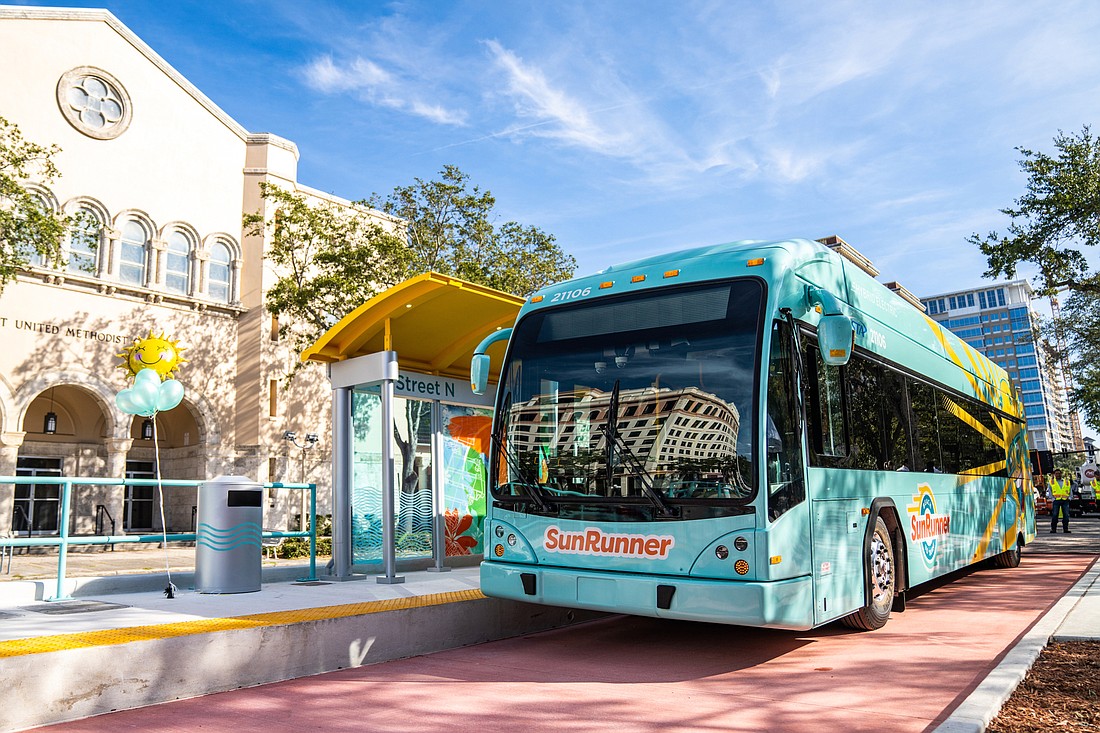- December 13, 2025
-
-
Loading

Loading

With fanfare and speeches that wouldn’t be out of place at a political rally, the SunRunner — Tampa Bay’s first bus rapid transit line — debuted to the public on Thursday, Oct. 20, at a launch party in downtown St. Petersburg.
The event featured members of the St. Petersburg High School marching band, the Tampa Bay Rays and Rowdies mascots and a ribbon-cutting ceremony complete with bursts of confetti. Less than 24 hours later, at 6 a.m. Friday, the SunRunner’s first passengers boarded in St. Pete Beach for a quick trip to downtown St. Pete made possible by dedicated lanes and raised platforms for faster and safer embarking and debarking.